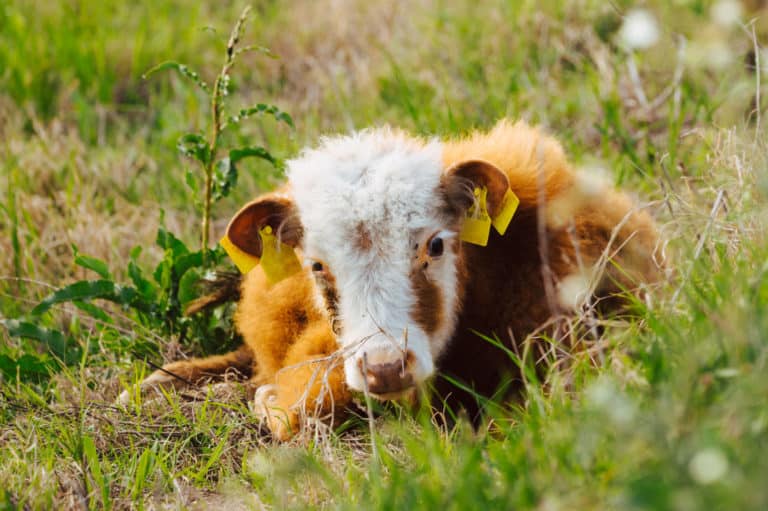Whether your calves are in hutches, individual pens or a group setting. Calves will experience heat stress this summer. High temperatures can be strenuous to calves, even more than cold temperatures. When the temperatures gets above 73°F, calves can experience heat stress. The humidity level also plays a role in heat stress, the higher the humidity, the sooner the calf suffers from heat stress.
Respiratory rates of all calves increase when the temperature exceeds 80°F, but calves housed in hutches with shade had respiratory rates of 10 breaths/minute lower than those calves in hutches with no shade during a study done at 3pm. Wood hutches were slightly lower internal temp than those hutches made of poly or fiberglass. Calves confined to hutches may be at a higher risk than those calves that have outside rest area.
For Calves, their upper critical temperature (the temp above which the calves internal body temperature begins to rise and they become heat stressed) is 70°F. Once this ambient temperature is reached then calves use their own energy to try to keep cool, same as in cold stress.
The following methods are signs of heat stress in calves:
- Breathing rapidly
- Drinking more milk & eating less starter/grain
- Drinking more water
- Staying outside and standing up
Key components to keeping calves hydrated and comfortable during extreme temperatures is to have clean free choice water preferably exchanged at every feeding. If in a group housing situation keep the waterers in the pen clean and fresh also.
For those calves that do become extremely dehydrated, you may need to IV fluids. Remember when you IV fluids tubing can be done at the same time. If a calf is dehydrated, you can not over due fluids. Remember to warm the fluids up both IV and or tubed electrolytes to their body temperature of 102.5 or a bit warmer (104).
Below is a heat stress chart!
Minnie


